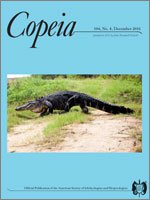Information on population genetic structure and connectivity among populations is essential for the implementation of effective conservation and management strategies for threatened species. The giant Arapaima is one of the most heavily exploited and threatened freshwater fishes in Guyana. Using nuclear microsatellite markers and mitochondrial (mtDNA) sequences (partial 16S rRNA gene, tRNA-Leu gene, and ND1 gene), we evaluated the genetic structure of Arapaima from the Essequibo and Branco (i.e., Amazon) river basins in Guyana. Both markers showed low genetic diversity compared to previously reported studies of Arapaima from the Amazon. Only two mtDNA haplotypes were recovered in Guyana that differed in a single nucleotide position. One was novel and restricted to the Branco basin; the other had previously been reported from the Amazon but, in this study, was restricted to the Essequibo basin. Surprisingly, STRUCTURE analysis of microsatellite markers grouped Arapaima from Guyana into three distinct clusters; one was again restricted to the Branco basin, while the other two were sympatric at multiple sites in the Essequibo basin. This is the first time genetically distinct groups of Arapaima have been found in sympatry at multiple sites. Results have important implications for management of Arapaima and conservation of their genetic diversity.
How to translate text using browser tools
28 November 2016
Genetic Diversity and Population Structure of the Threatened Giant Arapaima in Southwestern Guyana: Implications for Their Conservation
L. Cynthia Watson,
Donald J. Stewart,
Annette M. Kretzer
ACCESS THE FULL ARTICLE





